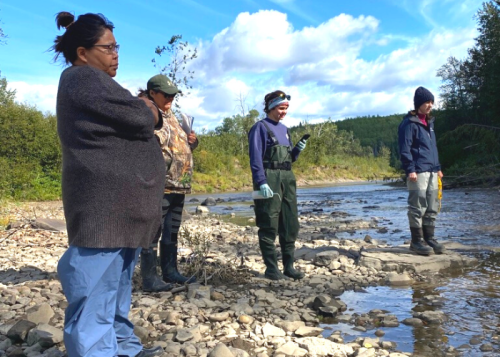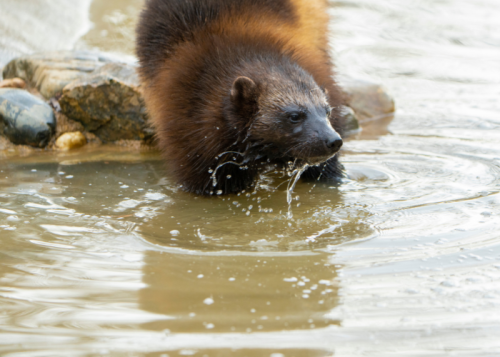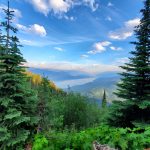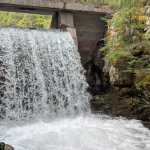Water & Wildlife: Piloting new technology through an Indigenous lens
Wildlife often moves through the landscape undetected. Eagles soar at heights beyond sight, lynx silently pad through forests, and trout swim inconspicuously along streambeds. With the help of a new technology, the clues that wildlife leave behind can now paint a picture of a landscape’s biodiversity. It’s called Targeted eDNA through the iTrackDNA project. The project design and training to carry out this groundbreaking technology is currently being co-developed between 52 partners, and First Nation communities across Canada.

A previous training with Blueberry River First Nations hosted by Living Lakes Canada.
With a scoop of water, iTrackDNA can test for genetic material left in the environment such as freshwater ecosystems by wildlife and aquatic species after they’ve flown, swam or slunk away. Known as environmental DNA or eDNA, this genetic material includes hair, scales, skin, and feces. iTrackDNA has the potential to reveal where specific wildlife species live and travel. Current and ongoing research is also delving into how targeted eDNA can have the potential to be used to assess the relative abundance of freshwater and terrestrial animal species in the future.
As climate change continues to alter environmental conditions such as temperature, precipitation and water availability, iTrackDNA will provide a more powerful lens to help track changes in species distribution. iTrackDNA also provides rapid, less costly, and more accurate biodiversity information with less disturbance to the species being studied compared to traditional surveys. Information gathered through iTrackDNA will help inform conservation and restoration decisions and improve ecosystem assessment and management.
Co-led and developed by the University of Victoria and INRS (Institut National de la Recherche Scientifique), the project goes beyond the lab and aims to engage and train community groups, First Nations and other environmental monitors in targeted eDNA protocols. In partnership with two First Nation communities — Gitanyow First Nations and Blueberry River First Nations — and guided by Targeted eDNA expert Jared Hobbs, Living Lakes Canada is helping co-develop the field training and study design. The critical first step for this is meaningful community engagement.

The Wolverine was identified as a priority species during community engagement.
Engagement rooted within Indigenous communities ensures that water monitoring programs are framed within an Indigenous worldview and built from Indigenous priorities. It allows for Indigenous values to lead water monitoring from the outset, with Western science tools providing the support to actualize the community’s vision.
For the iTrackDNA project and with funding support from Living Lakes Canada, Blueberry River First Nations (BRFN) engaged family focus groups to better understand culturally-important species and locations for eDNA monitoring. Land and water-based animals were selected including Woodland Caribou, Wolverines, Thinhorn Sheep and Mountain Whitefish. Many of the top 10 priority species selected are recognized as special status federally and/or provincially. In other words, species that are at risk of disappearing through extinction or extirpation. The BRFN family focus groups also identified 35 locations as important sites for eDNA sampling.
Over the next three years, Living Lakes Canada will support both BRFN and Gitanyow First Nations in developing community-based capacity for eDNA monitoring and with field collection. This upcoming field season will feature two field training events, one with Gitanyow First Nations near Hazelton, B.C. in June and one with BRFN near Fort St John, B.C. in July. Leading up to these field trainings, Jared Hobbs, RPBio is supporting the development of the field modules and providing Living Lakes Canada staff with a train-the-trainer opportunity on Pender Island at the end of April. He will also join the Gitanyow training to ensure the modules are effective for achieving the desired research results.
While these trainings are private events, visit the iTrackDNA project page, watch the iTrackDNA: Our Biosphere Revealed film below or contact raegan@livinglakescanada.ca for more information.





